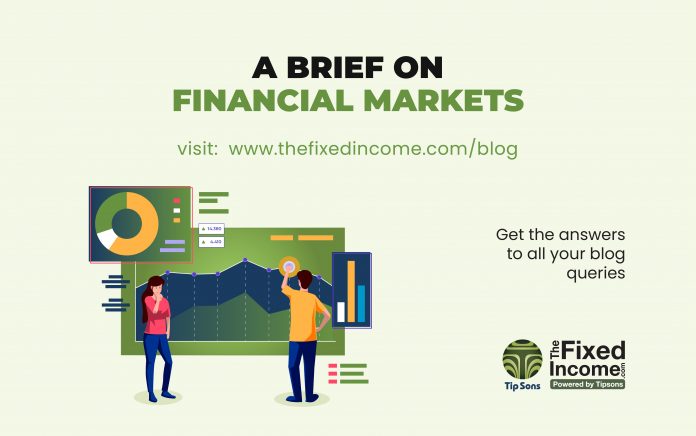

Think of the days when the world survived on “barter system”. How ideal it would have been in so many ways. I could have exchanged a pot full of sugar for a jar of coffee! Easier said than done now.
With time and technology, our needs evolved, economies grew, demands and expectations cropped up. To meet all those, mere barter systems were not going to suffice for sure. It paved the way for a system where money could be borrowed, not bartered, for it’s value, giving birth to the financial markets of the world!
FINANCIAL MARKETS: CAPITAL AND MONEY MARKET
What does a credit rating tell you about a bond issuer? In plain vanilla terms, a credit rating is an indicator of the credit risk borne by the bond issuer.
Based on the duration or term of a security, it will either trade in a capital market or in a money market. Securities are either issued for a long term (more than 1 year of maturity) and tradable in a capital market, or for a short term (up to and less than 1 year of maturity) and hence tradable in a money market.
CAPITAL MARKET: is where long term securities are issued, traded, and settled. Long term securities are categorized into debt and equity. Hence, a capital market provides a trading platform for both, debt and equity instruments.
Debt Market: a trading platform where debt market instruments are issued, and available for trading. Key debt market securities which trade in the capital market are long term bonds (G-Sec for e.g.) and debentures.
Debt markets provide access to both wholesale investors and retail. However, both have dedicated trading platforms:
Wholesale Debt Market (WDM): a legacy platform available exclusively to wholesale investors. Participating parties include banks, primary dealers, financial institutions, mutual funds, insurance companies, corporates and foreign institutional investors (FIIs), to transact amongst themselves or with non-banking clients.
Retail Debt Market (RDM): Retail investors were, for the first time, allowed to participate in auction of G-Secs via a non-competitive bidding process. There was however a cap of 5% on the total issue price which was available to retail investors for auction participation. Later on other participating investors who were not trading in WDM were allowed to trade in RDM, being pension funds, provident funds, non-banking financial companies (NBFCs), and private trusts.
Equities Market: a trading platform where company stocks are listed, issued, and traded either via over-the-counter (OTC) or direct exchanges. (Equities are traded on Exchange Platform)
Capital market can also be bifurcated into two core markets allowing trading of debt and equity securities based on whether it is a new issue or an existing trading:
Primary Market: where new securities are initially offered to the public and/or listed on the stock exchange. (Primary market issuances can be done through private placement route also, wherein issuer share offer to selected investors only)
Secondary Market: where existing securities can be traded after being initially offered to the public in the primary market and/or listed on the stock exchange. WDM and RDM are segments of a secondary market.
MONEY MARKET: is where short term securities are issued, traded, and settled. Short term instruments are also referred to as ‘money market instruments’ by virtue of their trading platform. Key debt market securities which trade in the money market are T-Bills, commercial paper (CP), and certificate of deposits (CD).
























